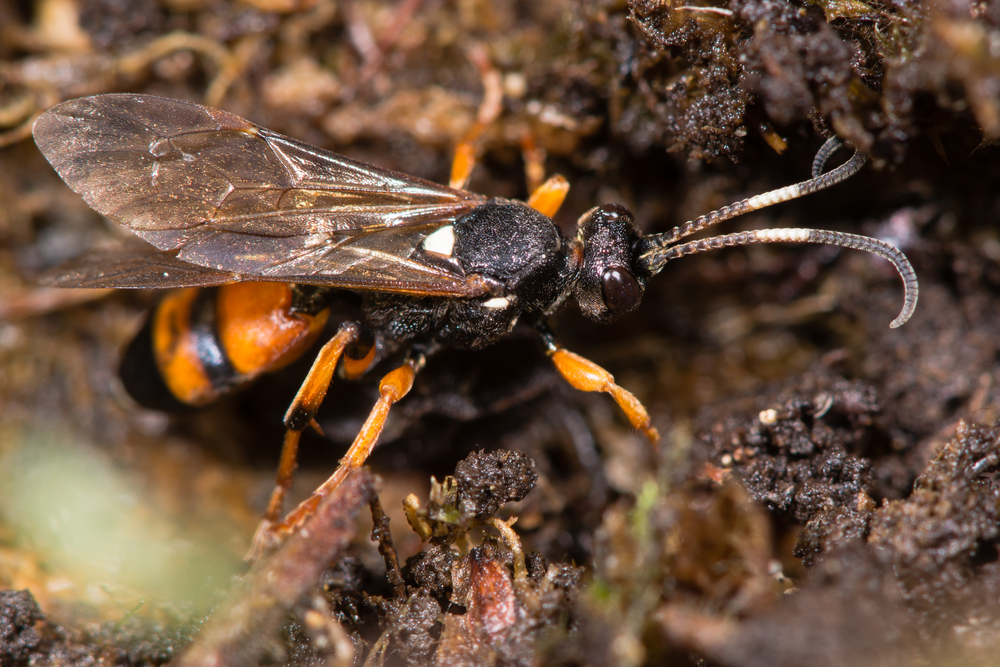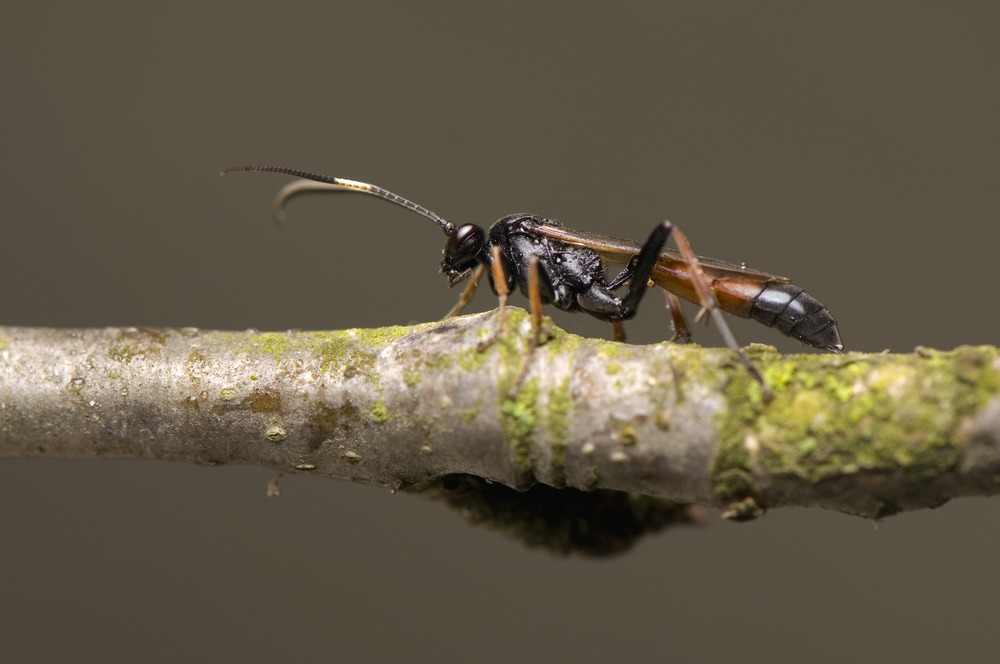Ichneumon wasps are a fascinating species of insect that can be found all over the world. These incredible creatures have an interesting life cycle and behaviour, as well as distinct characteristics that make them easy to identify in their natural habitats. In this article, we’ll explore the ichneumon wasp from head to tail – looking at its overview, identification tips, habitat preferences and more. With some research into these intriguing insects, you’ll soon know what makes an ichneumon wasp so special.
Overview
The ichneumon wasp (Ichneumonidae) is a family of parasitic wasps that belong to the order Hymenoptera. They are found all over the world, with more than 20,000 species identified so far.
How To Identify a Ichneumon Wasp
The Ichneumon wasp is a small, slender insect that can be identified by its long antennae and thin waist. It has two pairs of wings, with the front pair being longer than the hind pair. The colour of an ichneumon wasp varies from yellow to black or brown, depending on the species. They range in size from 1/4 inch to 2 inches in length.
Ichneumon wasps have three body parts: head, thorax and abdomen. The head is rounded with large eyes and antennae that are at least as long as their bodies. Their thorax consists of three segments, while their abdomens are composed of several segments which may be marked with stripes or spots. Some species also possess a sting at the end of their abdomen, which they use for defence against predators such as birds or lizards.
Lastly, most ichneumons will have a pointed ovipositor at the end of their abdomen, which is used for laying eggs into host organisms such as caterpillars or wood-boring beetle larvae. This feature helps to distinguish them from other insects like bees or flies and can be seen even from afar due to its long antennae.

Ichneumon Wasp Habitat
The ichneumon wasp is an insect that can be found in many different habitats across the world. They are most commonly seen in temperate climates, but they have also been spotted in tropical and arid regions.
In terms of their preferred environment, these wasps tend to prefer open areas with plenty of vegetation for them to feed on. This includes fields, meadows, gardens and woodlands. They may also be found near water sources such as streams or ponds where there is a plentiful supply of insects for them to hunt and feed upon.
Ichneumon wasps are often observed nesting in hollowed-out trees or logs, under rocks or even inside abandoned animal burrows. These locations provide protection from predators while allowing easy access to food sources nearby. In some cases, they may even make use of man-made structures such as sheds or garages if they offer suitable shelter and food resources close by.
Overall, ichneumon wasps require a habitat that offers both protection from potential threats as well as easy access to food sources in order for them to successfully reproduce and survive throughout their lifecycle stages – egg through adult form – without any major difficulties along the way.
Ichneumon Wasp Behaviour
In terms of behaviour, ichneumon wasps typically spend most days searching for food sources, such as caterpillars or beetle larvae, before returning back home once nightfall approaches so they can rest until morning arrives again. This process repeats itself day after day until winter sets in when these insects enter diapause (a state similar to hibernation) until springtime brings warmer temperatures again, allowing them to resume activity once more.
They are known to be territorial and will aggressively defend their nesting sites from other wasps, bees, and even some birds. These wasps build nests in sheltered areas such as hollow trees, under rocks, or inside dead wood.
Ichneumon wasps are predatory by nature and feed on caterpillars, beetle larvae, aphids and other insects. To hunt for prey, they use their long antennae to detect the movement of potential food sources within the vicinity of their nest. Once detected, they quickly swoop down to capture the prey with their powerful mandibles before returning back to the nest with it.
These wasps also have an interesting social behaviour when it comes to mating rituals; males will patrol certain areas looking for females while emitting pheromones into the air, which attract them from miles away. The female then chooses her mate based on size and colouration before laying eggs in a secluded area near her chosen partner’s territory where she can protect them until they hatch.

Ichneumon Wasp Life Cycle
When it comes time for reproduction, these wasps undergo a complete metamorphosis, which consists of four stages: egg, larva (grub), pupa (cocoon) and adult insect stage; this process usually takes around one month, depending on environmental conditions such as temperature or humidity levels during the development period. After emerging from the cocoon as adults, they live anywhere between two weeks up to several months, depending on the species type but typically die shortly after reproducing due to exhaustion from all energy expended during mating season activities like hunting for food sources etc.
The life cycle of the ichneumon wasp is an interesting one. It begins with the female laying her eggs in or on a host, usually another insect such as a caterpillar. The eggs hatch, and the larvae feed off of their host until they are ready to pupate. At this stage, they form a protective cocoon around themselves before emerging as adults.
Once out of its cocoon, the adult ichneumon wasp will search for food sources like nectar and pollen from flowers or sap from trees. They may also hunt other insects to feed on or lay their own eggs in/on them if conditions are right. In some cases, they may even use their long ovipositor (egg-laying organ) to inject venom into larger prey items like spiders.
When mating season arrives, male ichneumons will compete for mates by performing courtship displays involving wing fanning and antennae tapping while females watch from nearby perches. After mating has occurred, males die soon after, while females live on for several weeks more, during which time she can lay hundreds of eggs over multiple hosts before dying herself at the end of the summer season when temperatures begin to drop again.

Ichneumon Wasp FAQs
Can ichneumon wasps sting you?
No, ichneumon wasps cannot sting you. The female has a long ovipositor which she uses to inject her eggs into the host’s body, but this is not capable of stinging humans.
Why is the ichneumon wasp called parasitic?
The ichneumon wasp is a parasitic insect, meaning it lays its eggs inside or on the bodies of other insects. The larvae then feed off the host’s body until they reach adulthood. This type of parasitism has been observed in many species of Ichneumonidae, and is why this family of wasps are referred to as “parasitic”. It is also thought that some species may use their hosts as food sources for their young, further contributing to their reputation as parasites.
What do ichneumon wasps eat?
Ichneumon wasps are parasitic predators, meaning they feed on other insects. They typically target caterpillars and larvae of moths and butterflies, as well as beetle grubs and sawfly larvae. In some cases, they will also consume nectar from flowers or honeydew secreted by aphids. Ichneumon wasps have a long proboscis which allows them to access the internal organs of their prey in order to feed on them directly. They also have strong mandibles which allow them to puncture the outer shells of their prey.

Ash is a contributing author who has been writing about wildlife for as long as he can remember. He has a vast knowledge of many different types of animals, from the tiniest shrews to the great whales that live in the deepest oceans.
